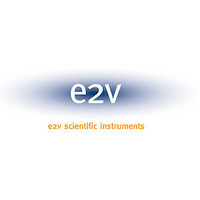TSEV83102G0BGL E2V, TSEV83102G0BGL Datasheet - Page 18

TSEV83102G0BGL
Manufacturer Part Number
TSEV83102G0BGL
Description
Manufacturer
E2V
Datasheet
1.TSEV83102G0BGL.pdf
(56 pages)
Specifications of TSEV83102G0BGL
Lead Free Status / RoHS Status
Not Compliant
Available stocks
Company
Part Number
Manufacturer
Quantity
Price
Part Number:
TSEV83102G0BGL
Manufacturer:
E2V
Quantity:
20 000
Figure 4. Black Anodized Aluminium Heat Sink Glued on a Copper Base Screwed on Board (all dimensions in mm)
Note:
Thermal Dissipation by Conduction Only
18
CuW Heat Spreader
Tied to V
Circular Base
(diam. 8.5 mm)
The cooling system efficiency can be monitored using the temperature sensing diodes, integrated in the device. Refer to
“DECB/DIODE: Junction Temperature Monitoring and Output Decimation Enable” on page 45.
TS83102G0B
EE
= -5 V
AI203
15
9
When the external heat sink cannot be used, the relevant thermal resistance is the thermal
resistance from the junction to the bottom of the balls: RTH
The thermal path, in this case, is the junction, then the silicon, glue, CuW heat spreader, pack-
age Al2O3, and the balls (Sn63Pb37).
The Finite Element Method (FEM) with the thermal simulator leads to
RTH
bottom of the balls (this is the worst case, no radiation and no convection is applied). With
such an assumption, RTH
To complete the thermal analysis, you must add the thermal resistance from the top of the
board (on which the device is soldered) to the ambient resistance, whose values are user-
dependent (the type of board, thermal, routing, area covered by copper in each board layer,
thickness, airflow or cold plate are all parameters to consider).
J-bottom of balls
= 12.3°C/W. This value assumes pure conduction from the junction to the
52
50
7.4
J- Bottom-of-balls
8.5
40
is user-independent.
20
J-Bottom-of-balls
22
0.5
.
Black Anodized
Aluminium
Copper Base with
Standoffs
Board
Holes for Screw
(diam. 2 mm)
2101D–BDC–06/04











